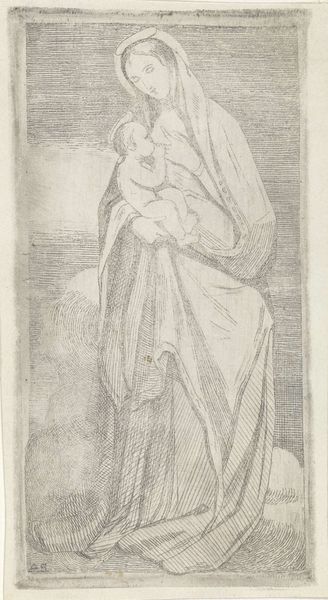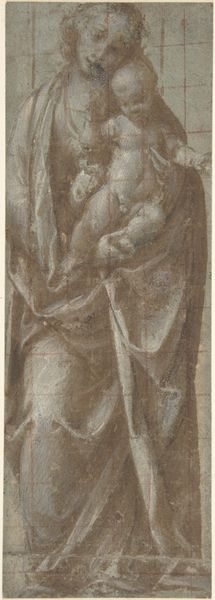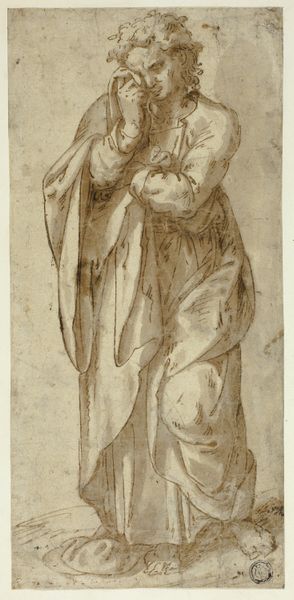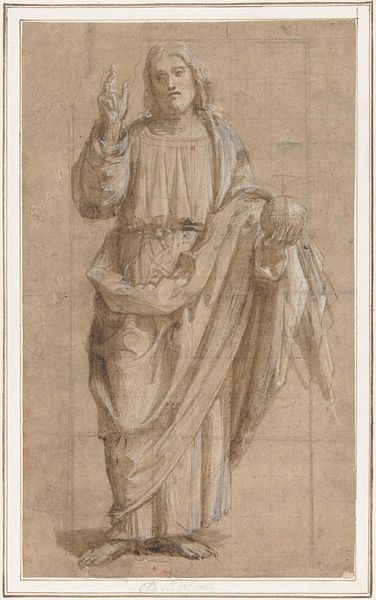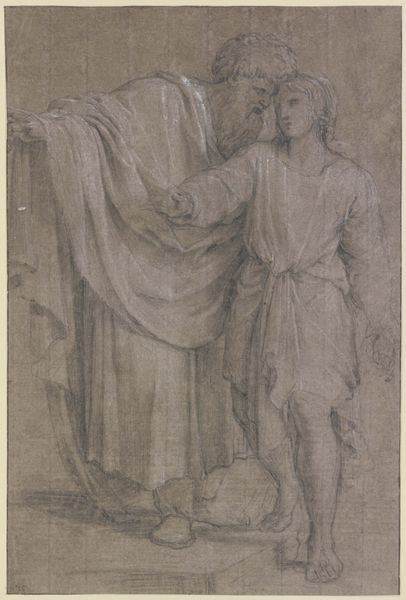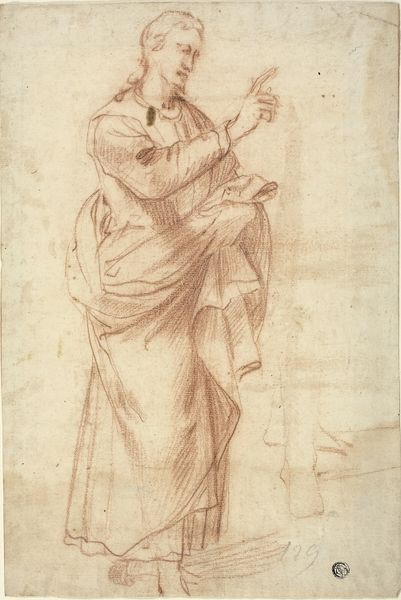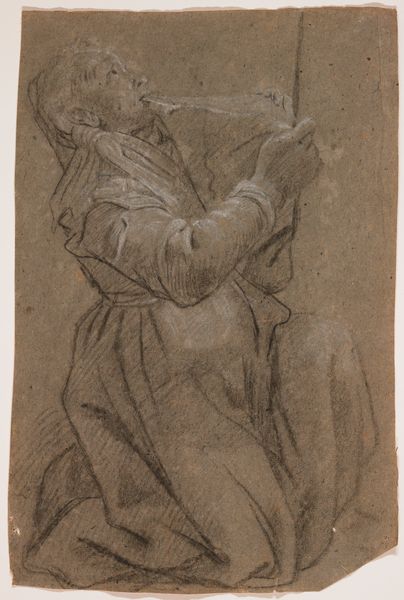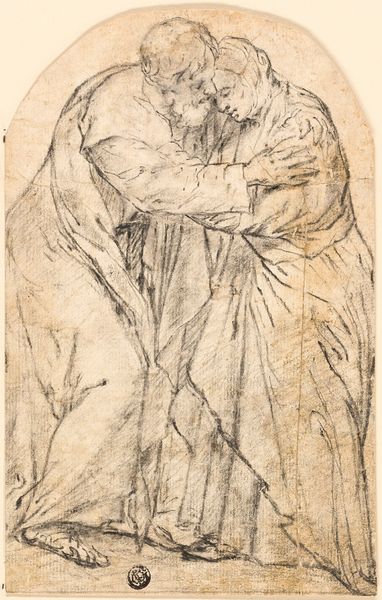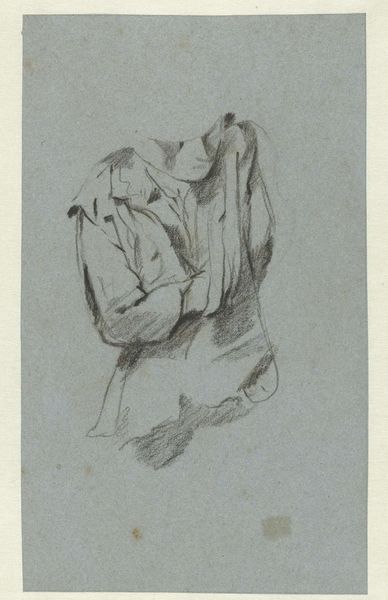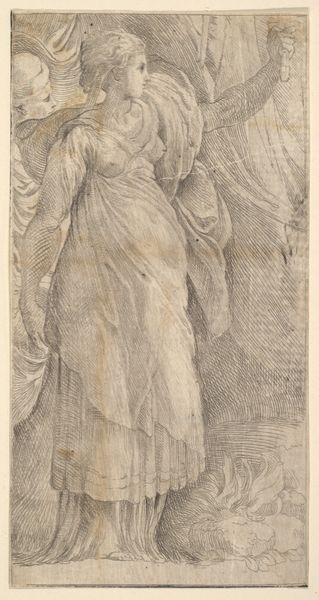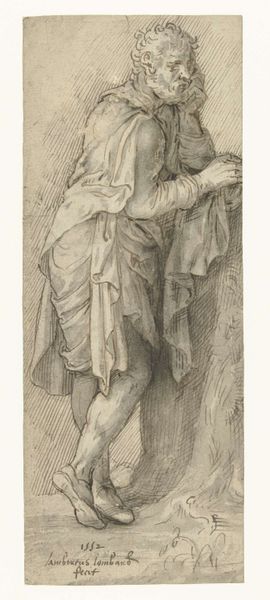
#
amateur sketch
#
toned paper
#
light pencil work
#
quirky sketch
#
pencil sketch
#
incomplete sketchy
#
personal sketchbook
#
sketchbook drawing
#
pencil work
#
sketchbook art
Dimensions: height 258 mm, width 165 mm
Copyright: Rijks Museum: Open Domain
Curator: Here we have a drawing by Moses ter Borch, titled "Standing Woman in Antique Clothing," dating back to around 1656-1657. Editor: My first impression is one of tentative fragility. The figure almost seems to emerge from the toned paper, a whispered vision of antiquity. Curator: Ter Borch’s work here at the Rijksmuseum exemplifies a growing fascination with classical antiquity. But look closer – it’s not just about historical accuracy; it's about how past ideals resonate in the present. Editor: Indeed. The antique garb suggests more than just historical reference. Clothing acts as an external representation of cultural values. Is she a representation of virtue? A sibyl? I want to believe she is a standard or cultural reference. Curator: That's precisely it! Consider that 17th-century Dutch society grappled with ideas of civic virtue and moral order after decades of war, this image offers viewers a silent proposition for such high ideal of morality or conduct. Editor: You’re right, this pencil sketch is powerful in that it is seemingly ephemeral yet conceptually deep and offers continuity for us to imagine a better self. Even the sketchiness of the rendering has that power. It looks light, as though an image to be maintained or remembered. The incompleteness gives me hope, strangely. Curator: And don't you think the artist’s selection of a woman further enhances those associations? Editor: Absolutely. She’s become a symbol of strength but in its simplest, rawest, almost broken form. We see vulnerability but simultaneously something worth venerating or looking up to. I admire Ter Borch’s skill to draw this duality with sparse pencil strokes. Curator: Ter Borch likely encountered classical art through prints and engravings and the access to a growing library, enabling a larger and more diverse viewership. It highlights art’s important and didactic role. Editor: This almost ghostly figure reminds me that even the most solid ideals begin as fragile concepts in a culture’s collective imagination. Curator: And they can last for ages and centuries, which I suppose gives me the reassurance you spoke about. Editor: Agreed. I hadn't thought about art's role as "cultural glue" holding and sharing values through generations. Thanks for shedding light.
Comments
No comments
Be the first to comment and join the conversation on the ultimate creative platform.
